It’s a mystery to me how I can be as old as I am. I never think about my face having lines and sun spots; it’s just the opposite. From the inside, I’m pretty sure my face is only forty—a young forty, I’m thinking—so that’s a great set-up for some dismay and disappointment when I look in the mirror! Aging is a humorous mystery that we all endure when we are lucky enough to do so.
In celebration of my turning another year older (almost four weeks ago now), Chris and I hiked at Mille Lacs Kathio State Park. It was a beautiful, blue-sky day, warm but not too hot, with a breeze that made shade-dwelling just about perfect. We went to the bog boardwalk first—the Touch the Earth Trail. (I love that name.) I get a thrill seeing the blooming plants that inhabit the bog, and the mystical, long-stemmed Cottongrass was as spectacular as when I first saw it! What an unusual, awesome plant!

I was expecting to see a bed of white-blooming Labrador Tea in the bog (or bog azaleas, as I call them), but only a few were blooming. We had had a freeze those two nights before Memorial Day, so I thought that must be the reason. There were other signs that frost had damaged the mosses and leaves of other plants.
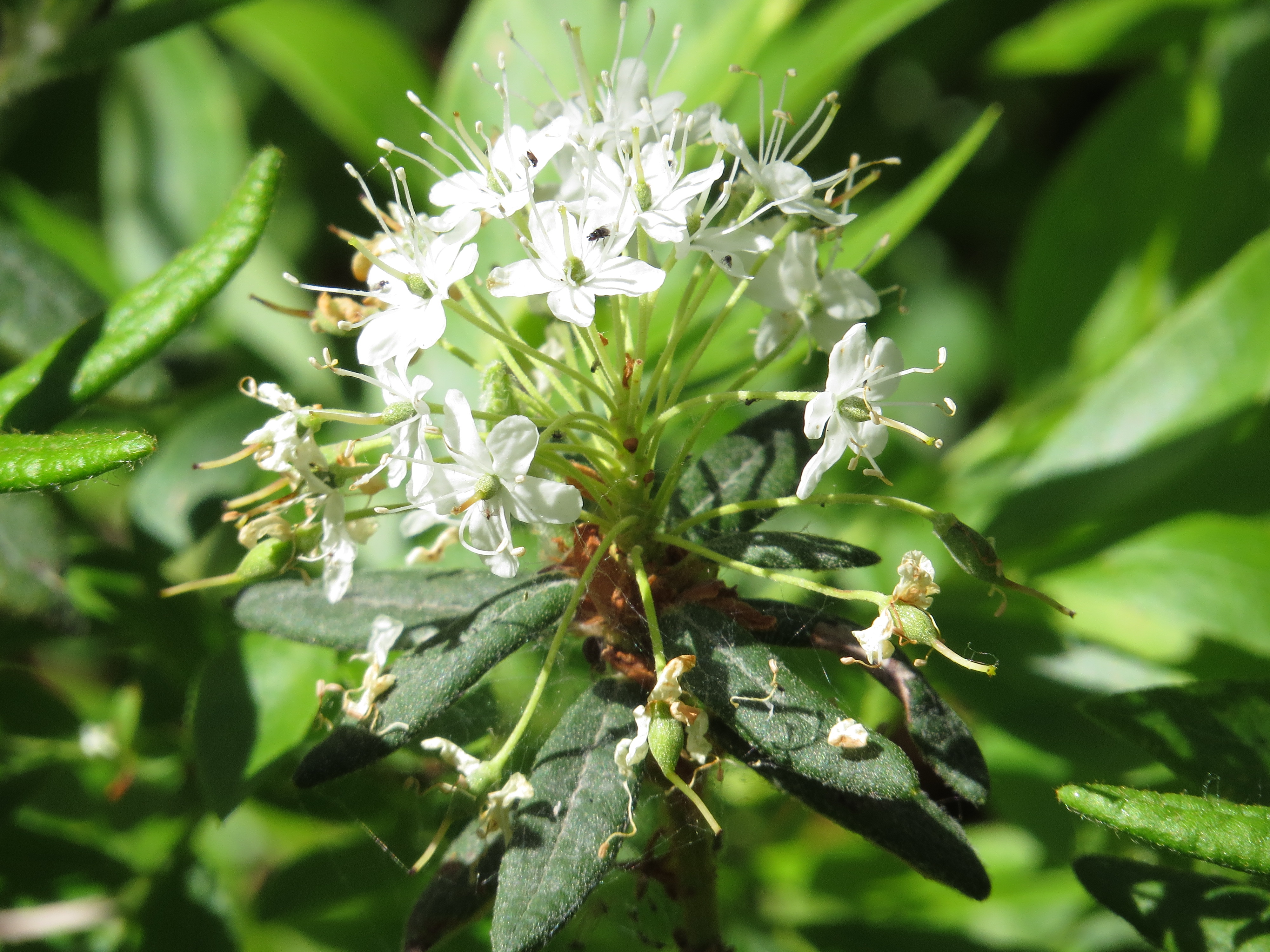
There is nary an insect as mystical as a dragonfly—their gossamer wings, their large, compound eyes, their quick, multi-directional flight, and how they light upon some object in peaceful repose.
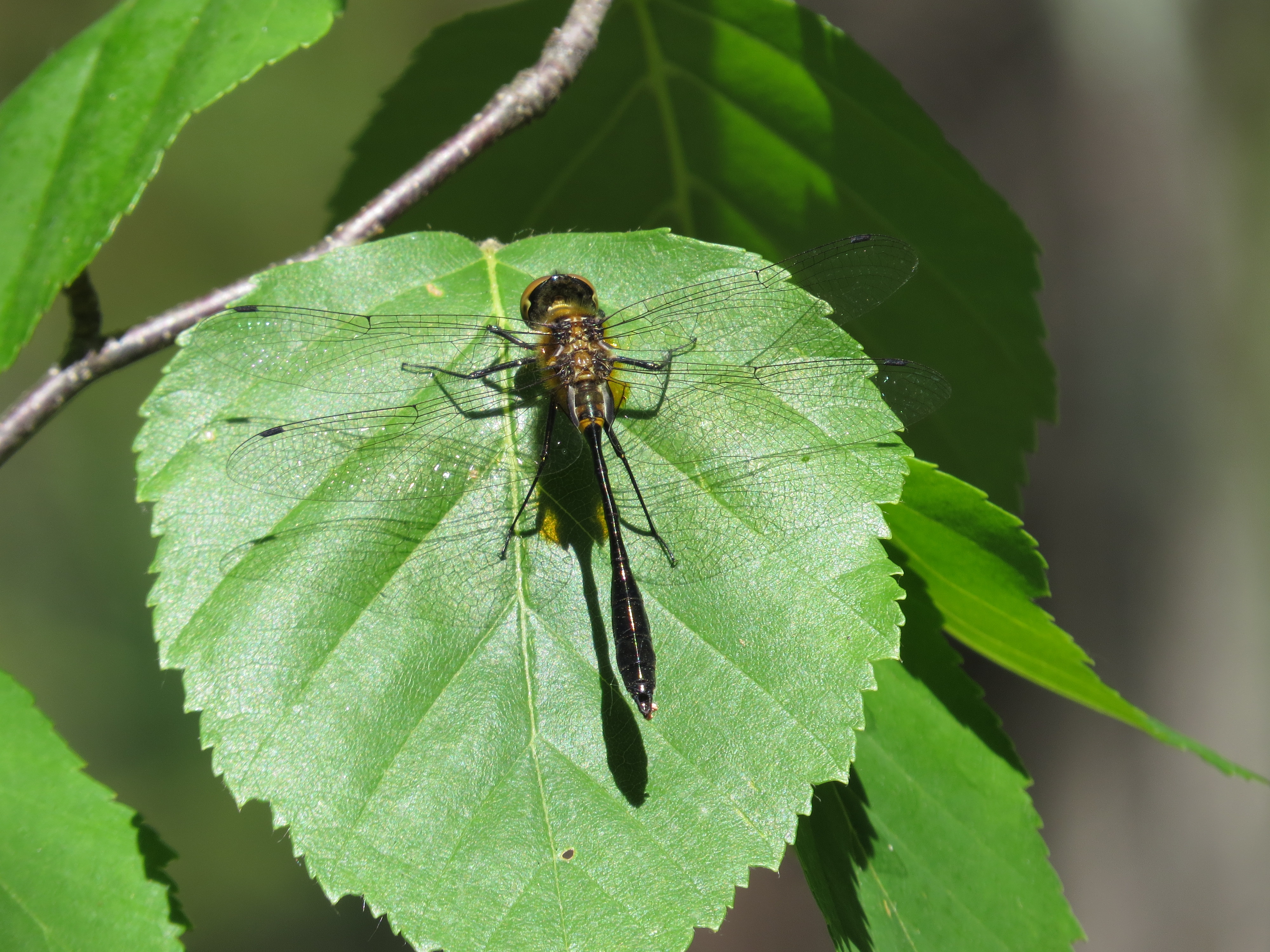
Another insect crawling up a dead tree that his relatives likely caused the demise of—a Western Sculptured Pine Borer—had his own air of mystery and flair. With large copper-speckled eyes, artfully segmented legs, and textured, metallic and black body, the Pine Borer shimmered in the sunlight.
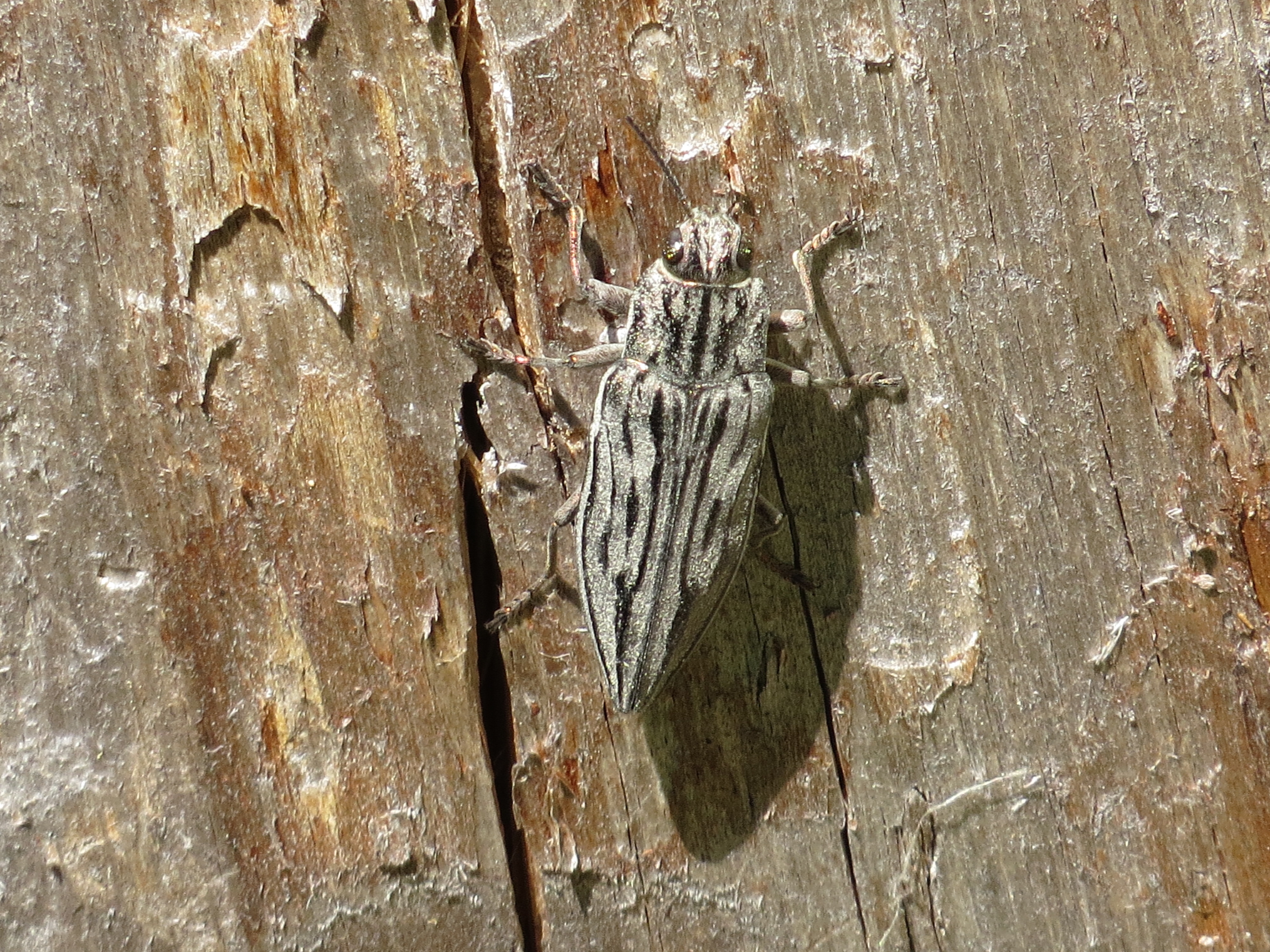
Large, vase-shaped Cinnamon Ferns were abundant in the bog. The fertile fronds are the namesake, like cinnamon sticks among the green.

Wild Blueberries were setting fruit, though I imagine the fruit buds were also nipped by the freeze, as fruit was scarce.
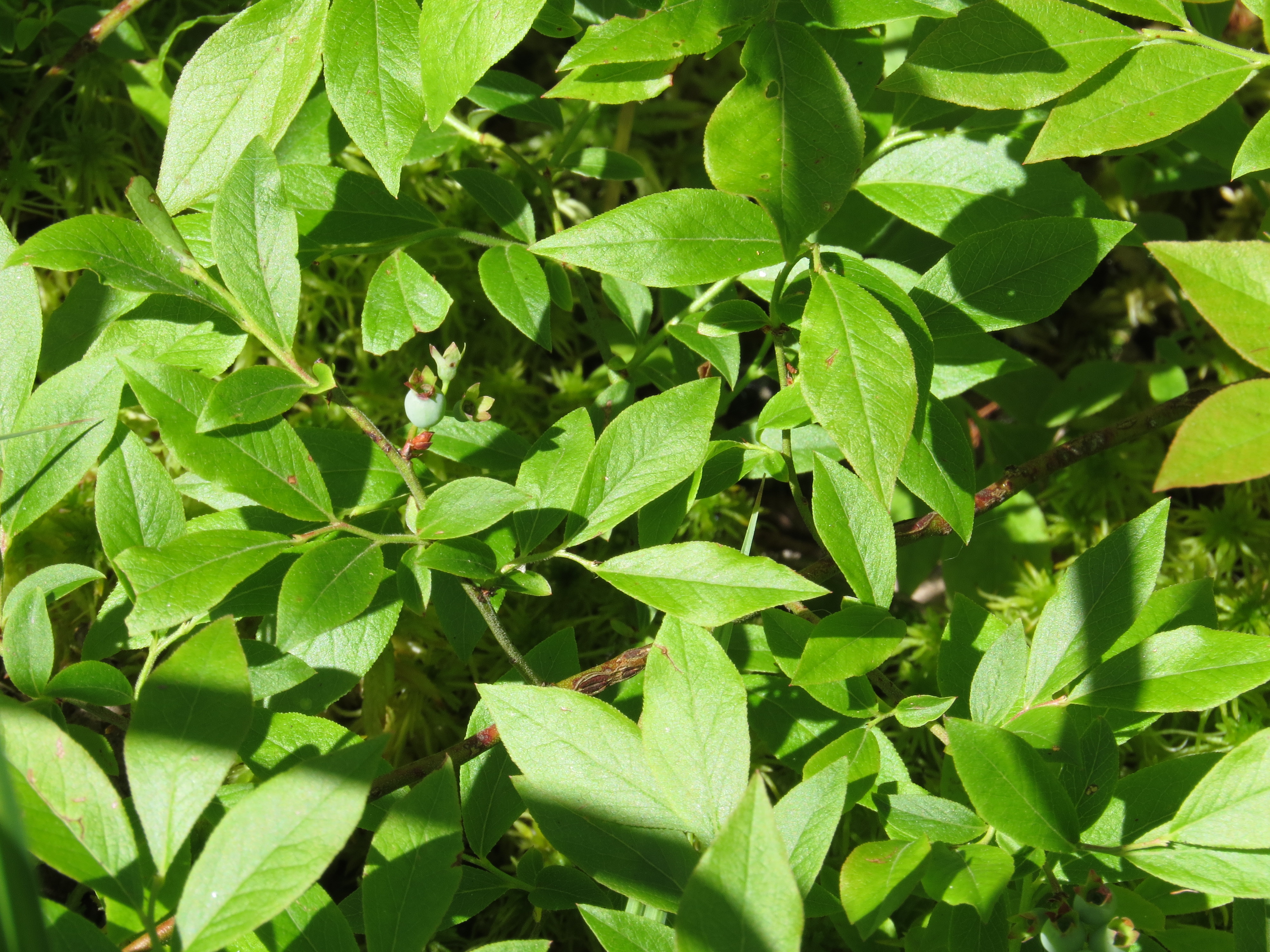
We drove to a parking area for a trail we hadn’t been on before that was described as hilly and rough terrain. I was surprised by how damp the trail was in areas, considering how drought-like our Spring had been. Soon we were in thick woods on a little-used trail, the undergrowth brushing our legs and arms as we walked through. I resigned myself to the fact that we were picking up ticks and vowed to enjoy the trail and deal with them later. It’s always a bit of a challenge to ‘watch’ my feet on a rocky or rooty trail and to watch for beautiful things around me, but I have gotten fairly good at it. So I was lucky enough to see this beautiful creature looking at us from behind a tree! His velvet-covered antlers were in the growth stage, when the fuzzy-looking skin supplies blood, oxygen, and nutrients to quickly grow the antlers for another season. When fully grown, depending on genetics, health, and age of the buck, the antlers harden, and the velvet is shed with the help of rubbing action on trees. We stood and looked at one another, both of us curious about the other.
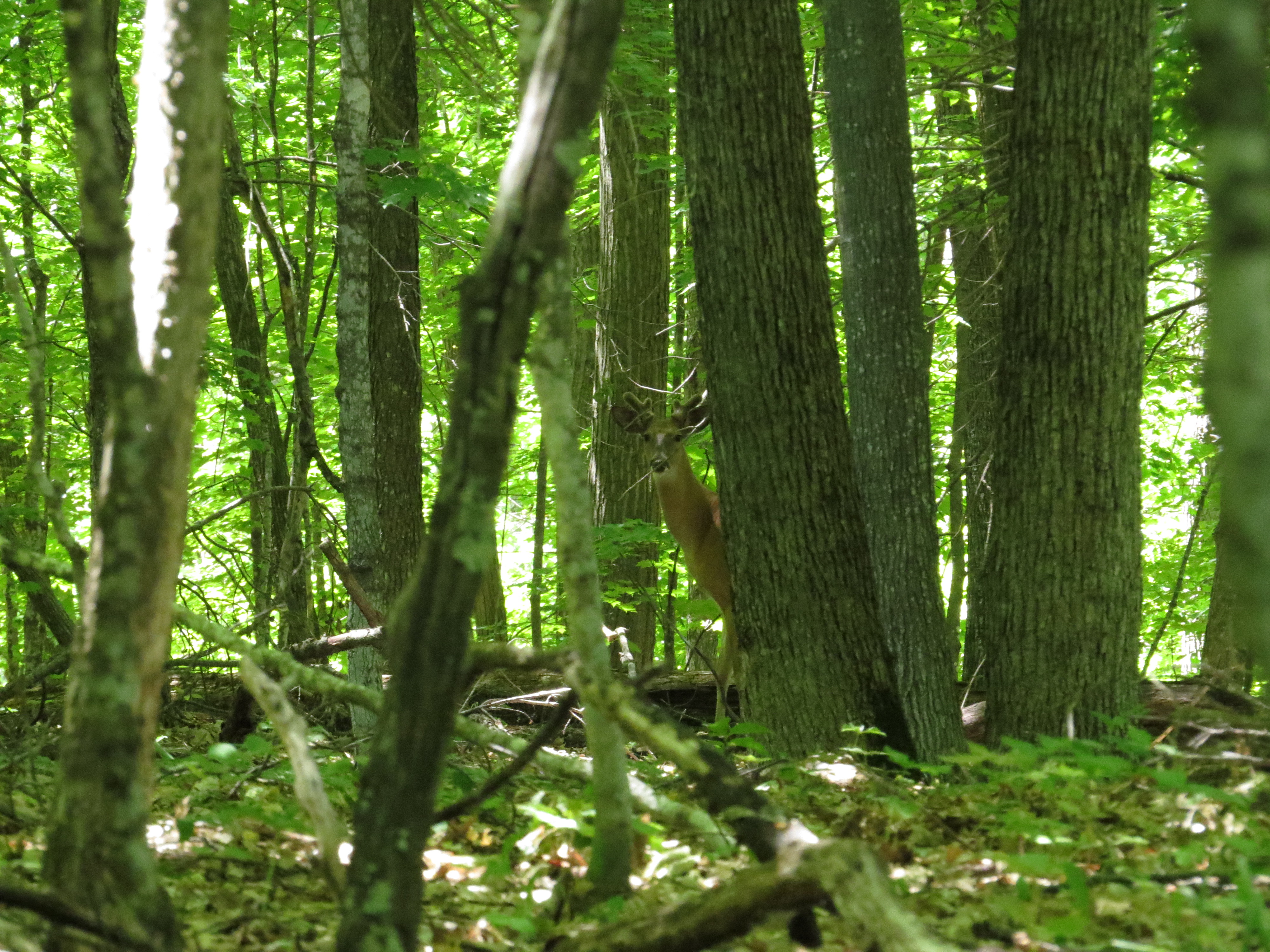

The trail brought us to a wetland area that opened up in the middle of the forest. Crows cawed from the top of a dead tree, the self-appointed sentries for the woodland creatures. A board walk elevated our feet above the Wild Calla water plants and was a table for a crayfish-eating animal who didn’t clean up his leftovers.

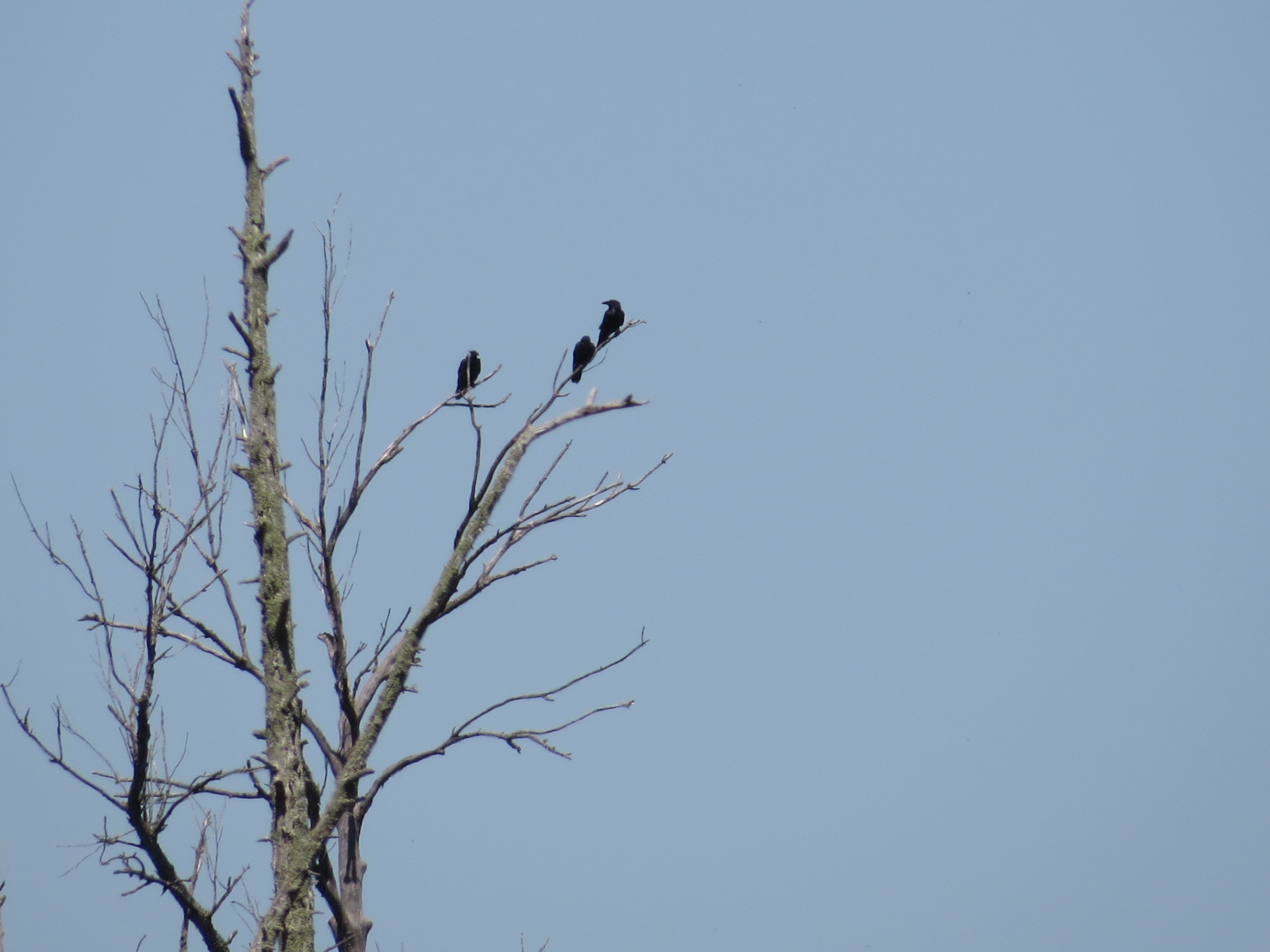

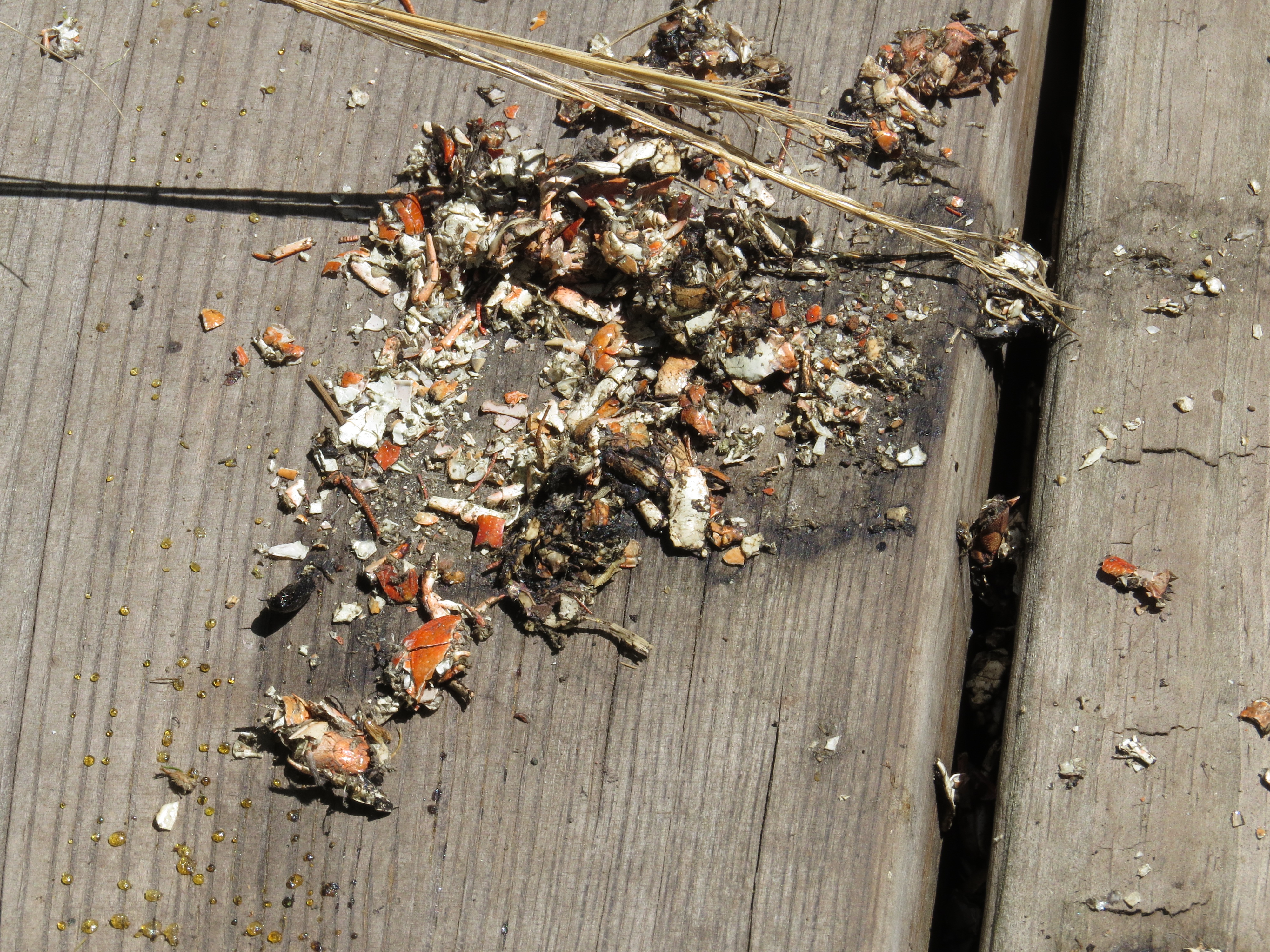
Another dragonfly posed in the sunlight amidst the art of logs, sedge grass, duckweed, Wild Callas, and moss. We were in a museum of Nature’s Art.
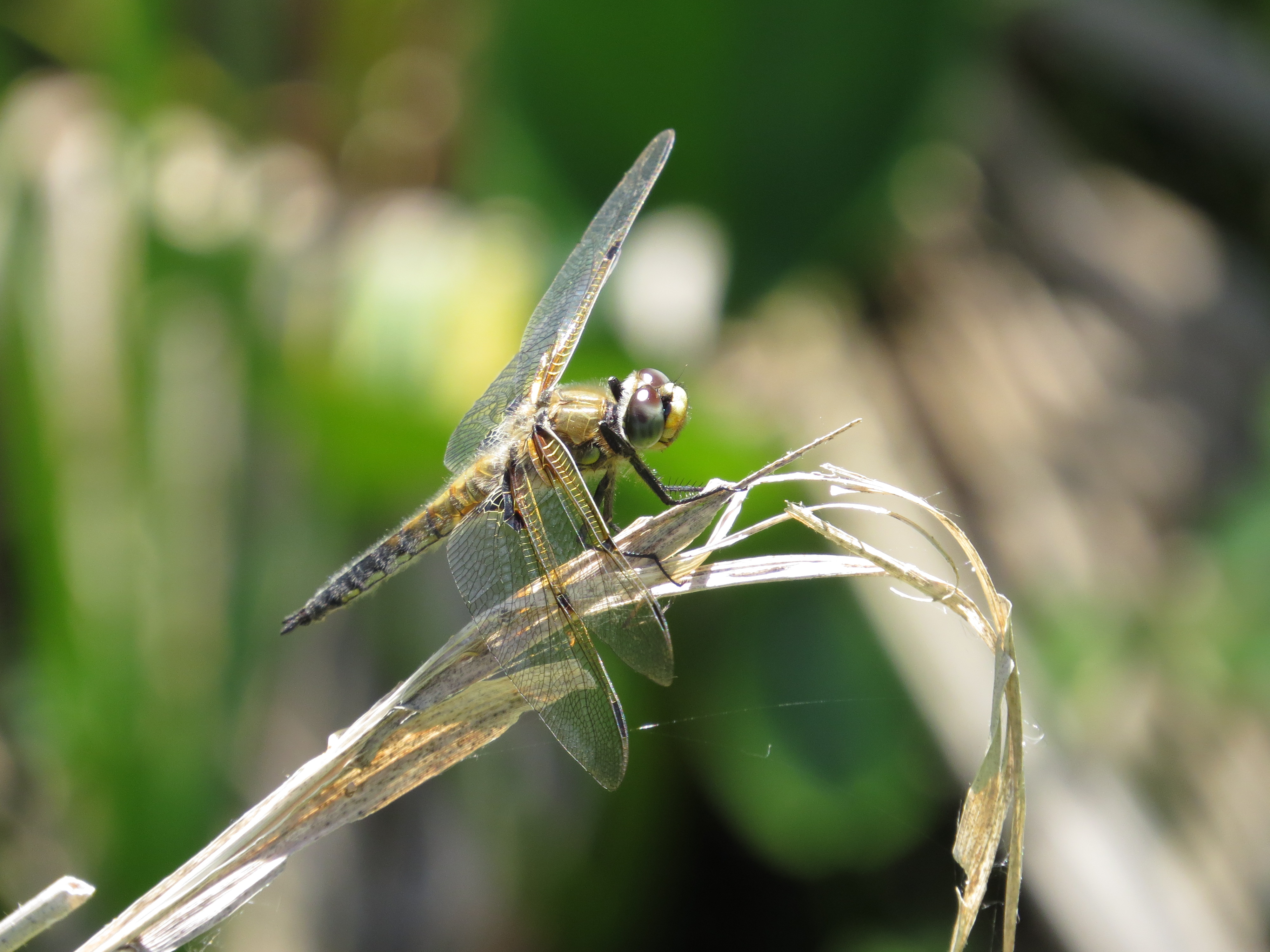

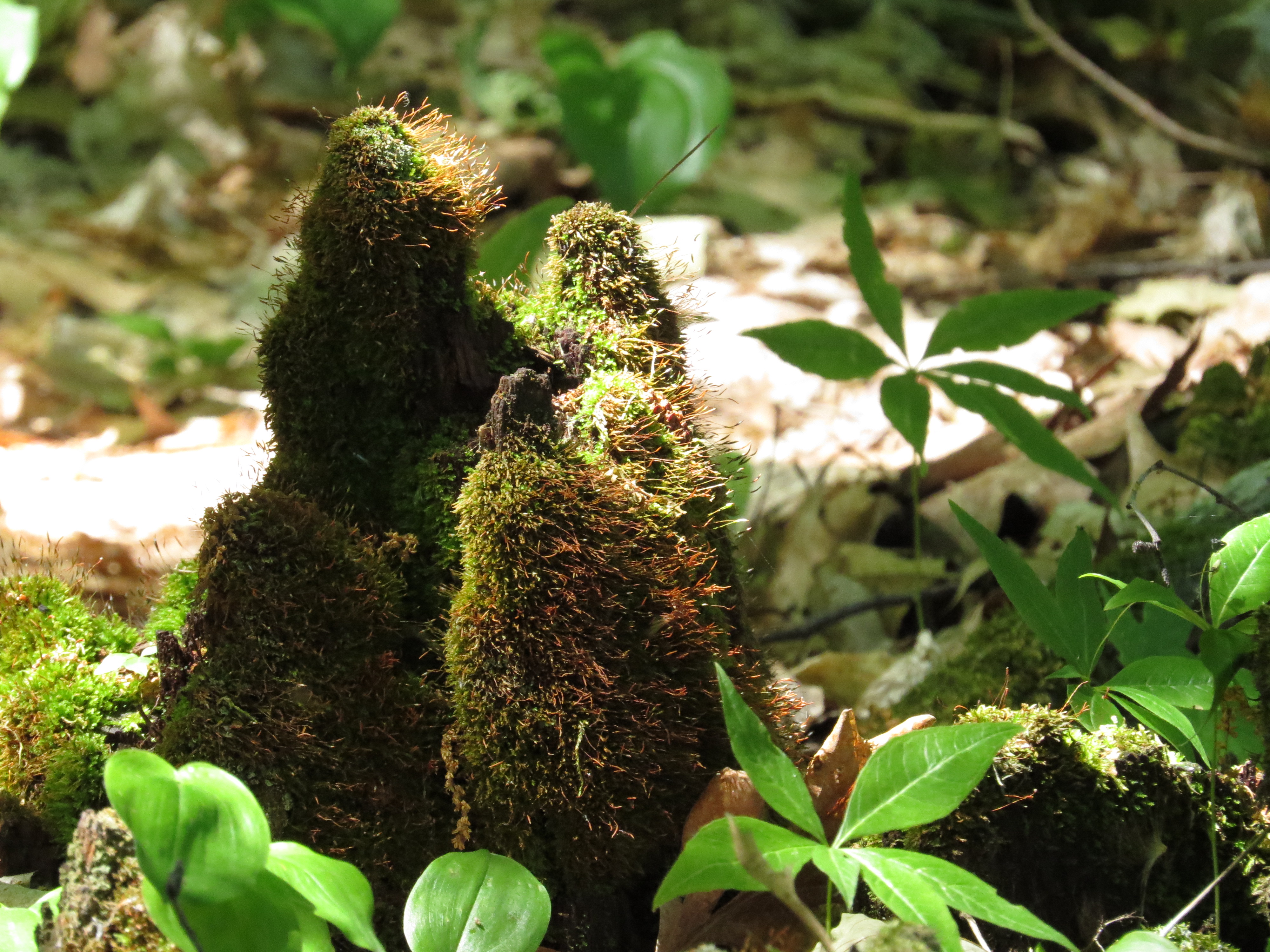
We circled around the wetland on the trail that kept us guessing whether we were on the trail! Soon our elevated vantage point allowed us to see open water reflecting green vegetation and blue sky. An open waterway through the wetland plants and chewed trees indicated that we were visiting the home of a beaver family.

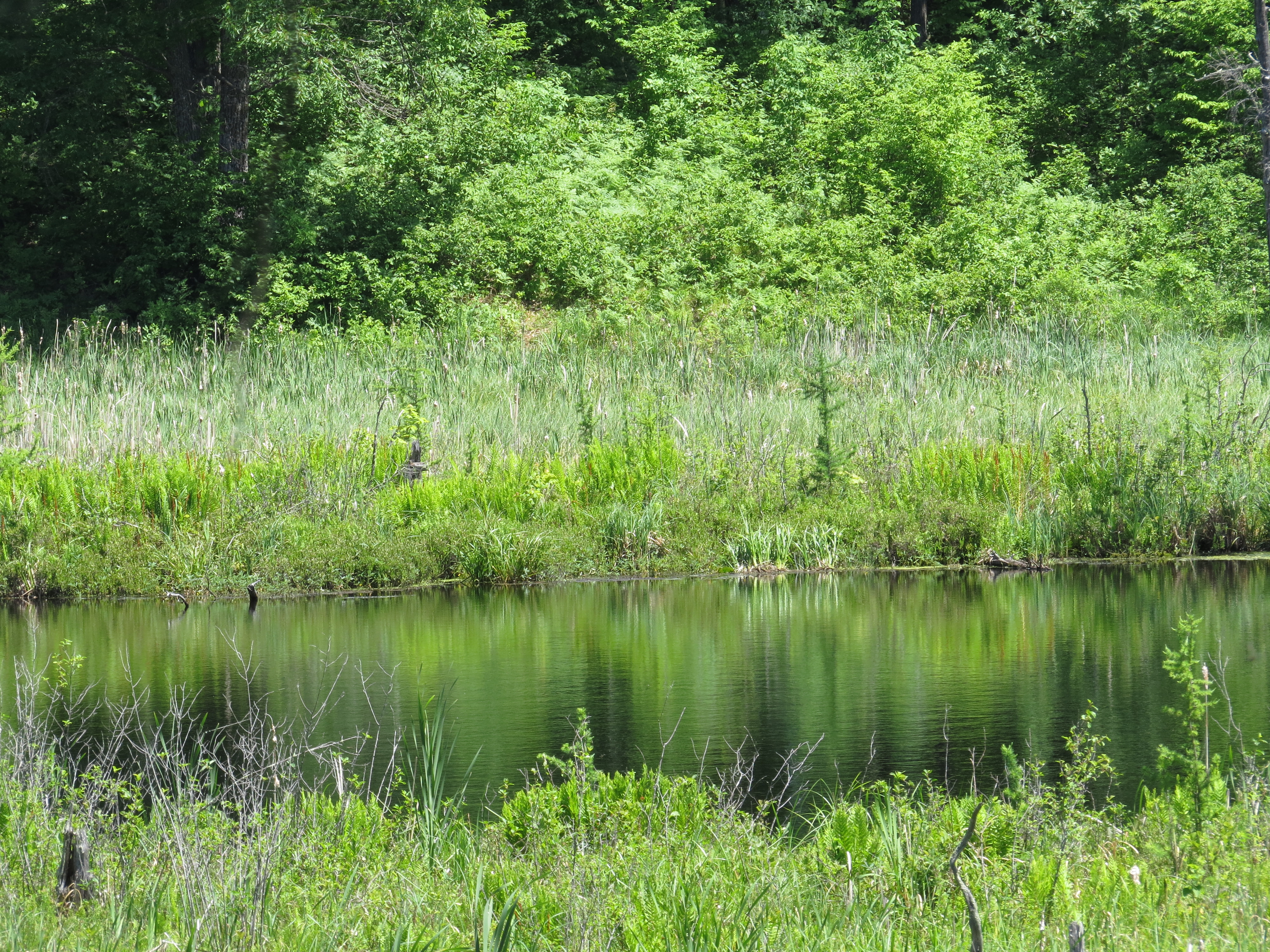
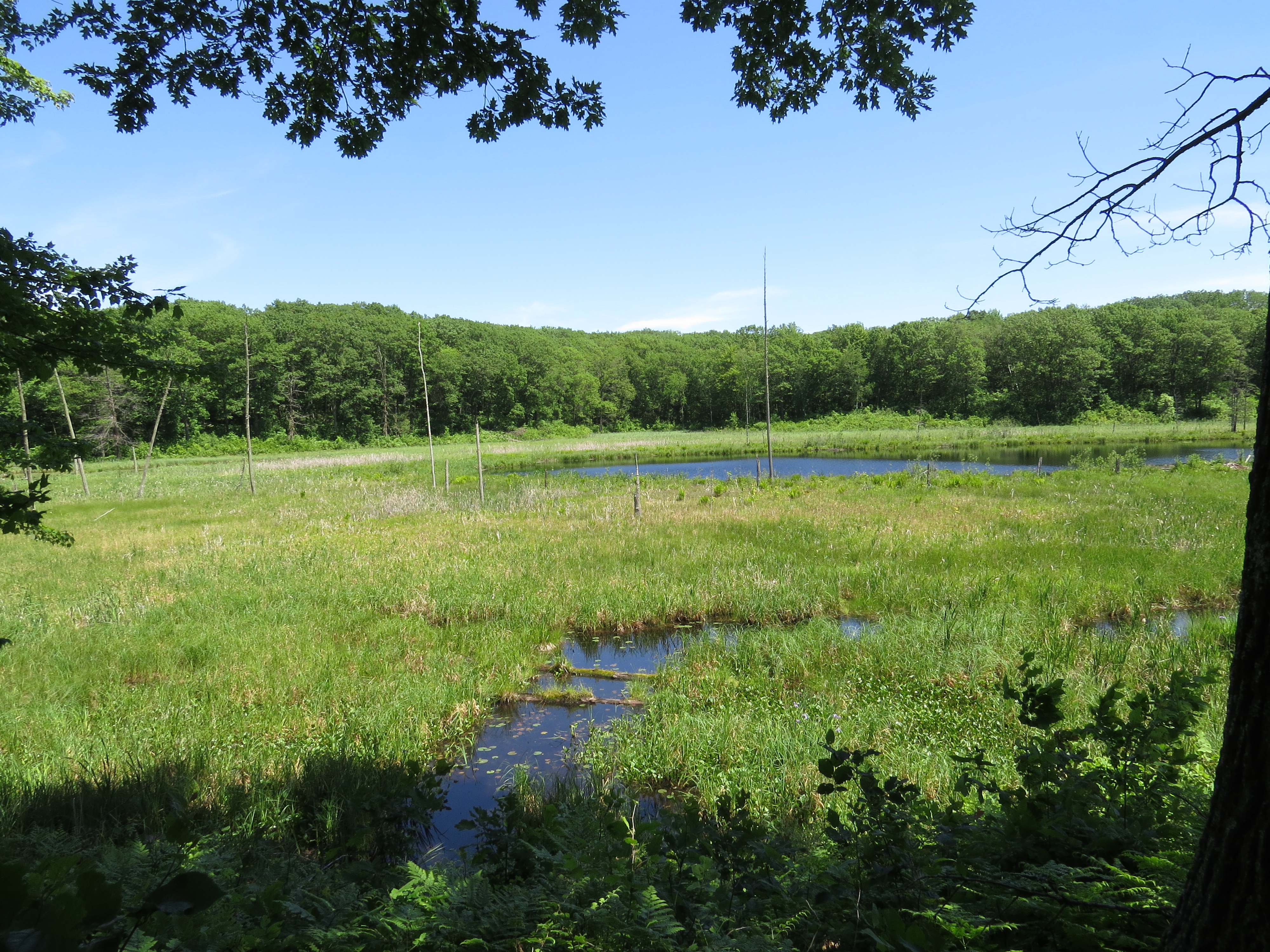
We passed a stately Pine that had a large, old wound scratched head-high into the bark. Dried amber droplets of sap had oozed from the wound, like healing tears to a wounded soul. They glistened in the sunlight.
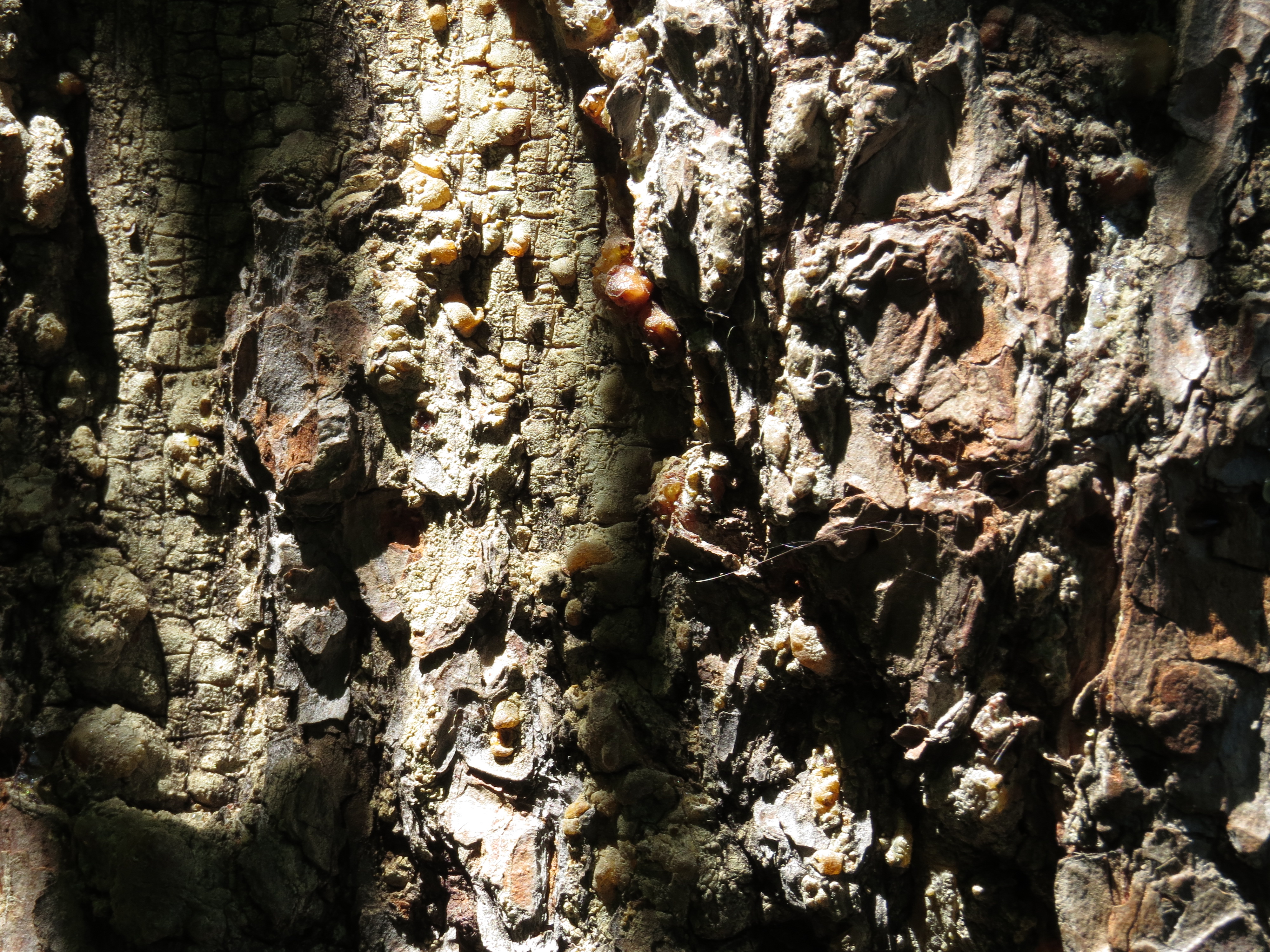
Another board ferried us across a black, icky-looking swamp. A closer look revealed decaying leaves, Maple seeds, and a thick mat of green slime algae.

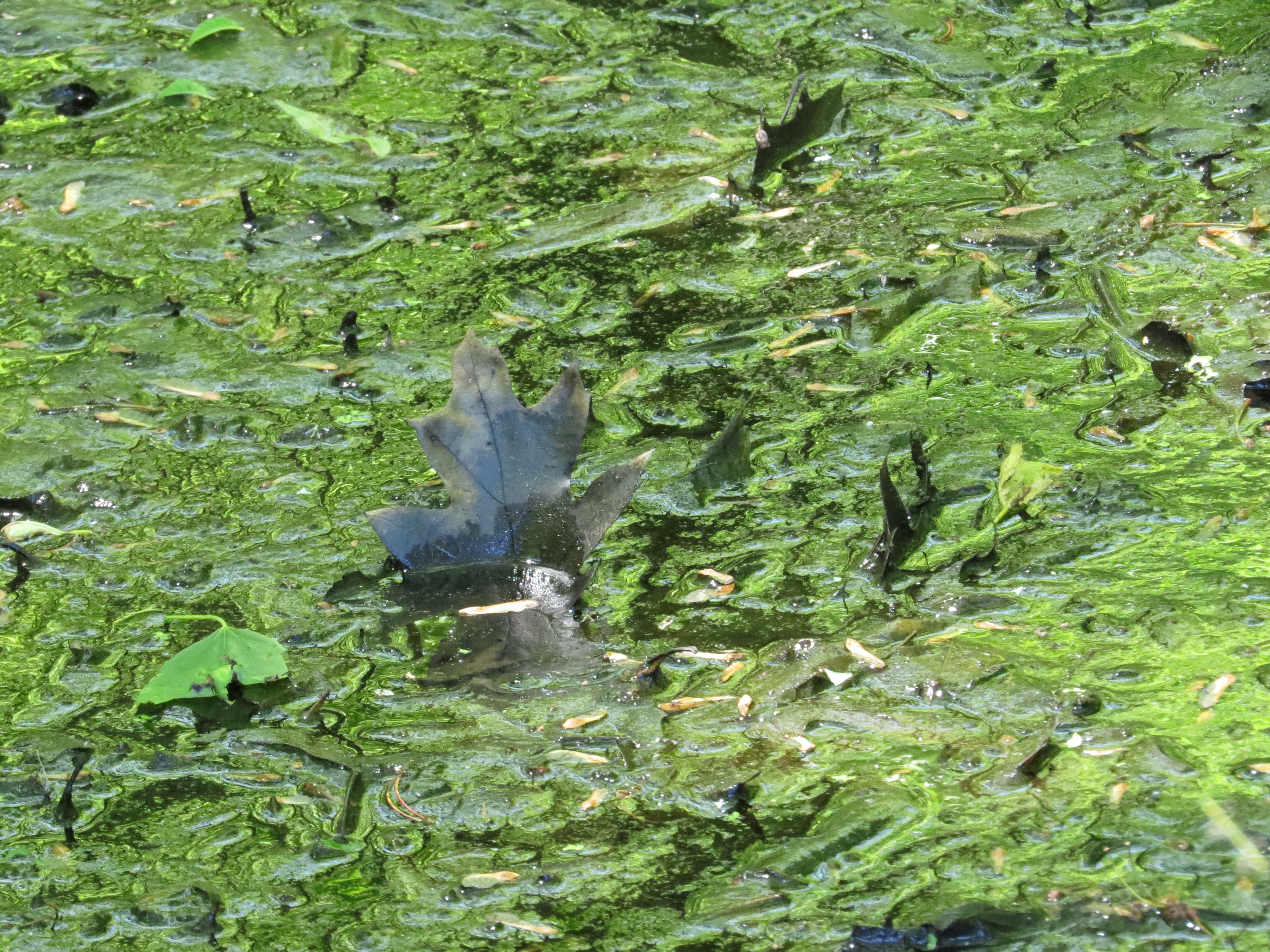
At the farthest point on the loop trail was a backpacking campsite overlooking the White Water Lily-covered pond. A breeze evaporated the heat and sweat we had generated to get there as we took a water and rest break. A pair of rusty-headed Trumpeter Swans flew in and settled into their peaceful, secluded home.

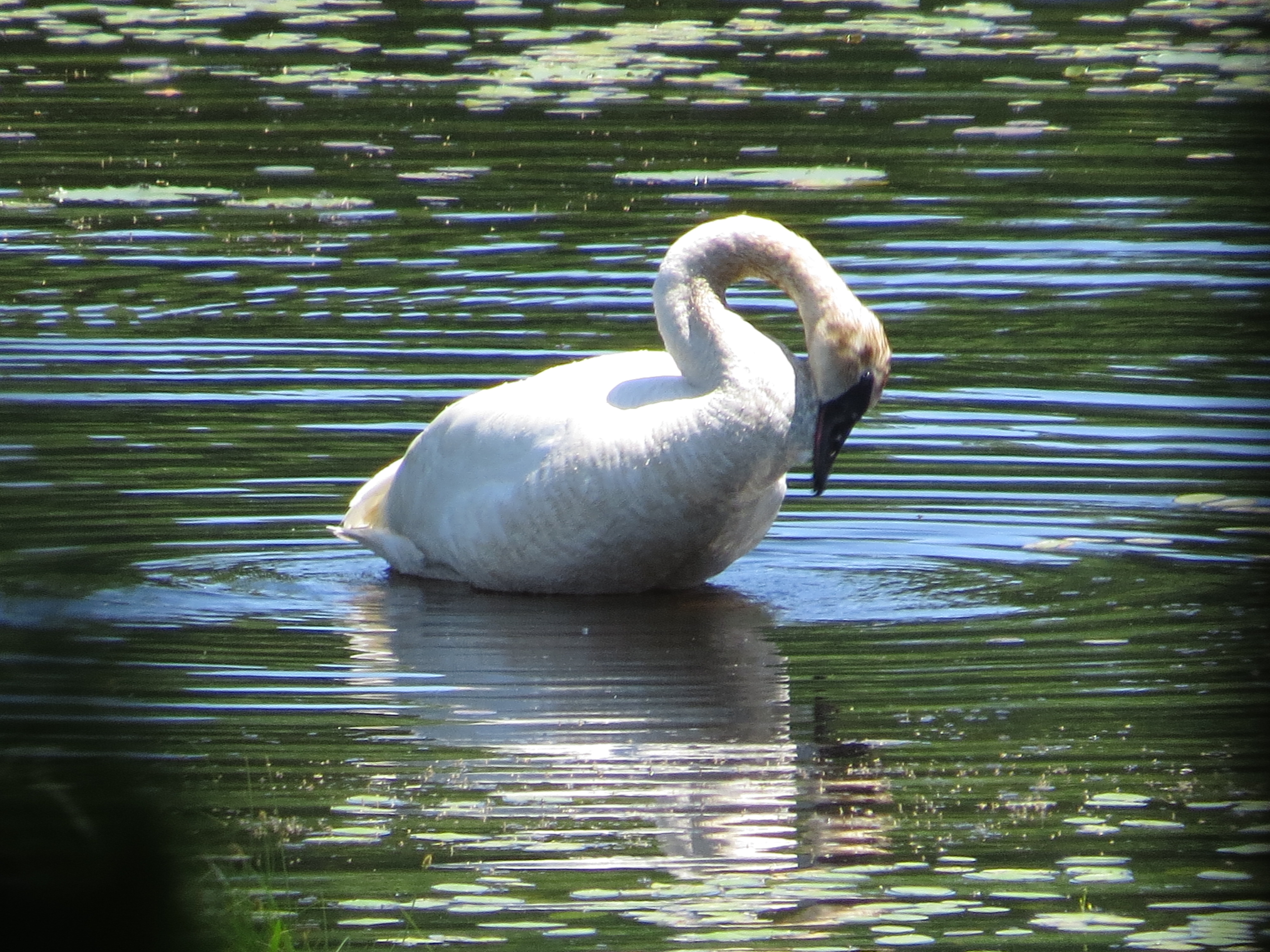
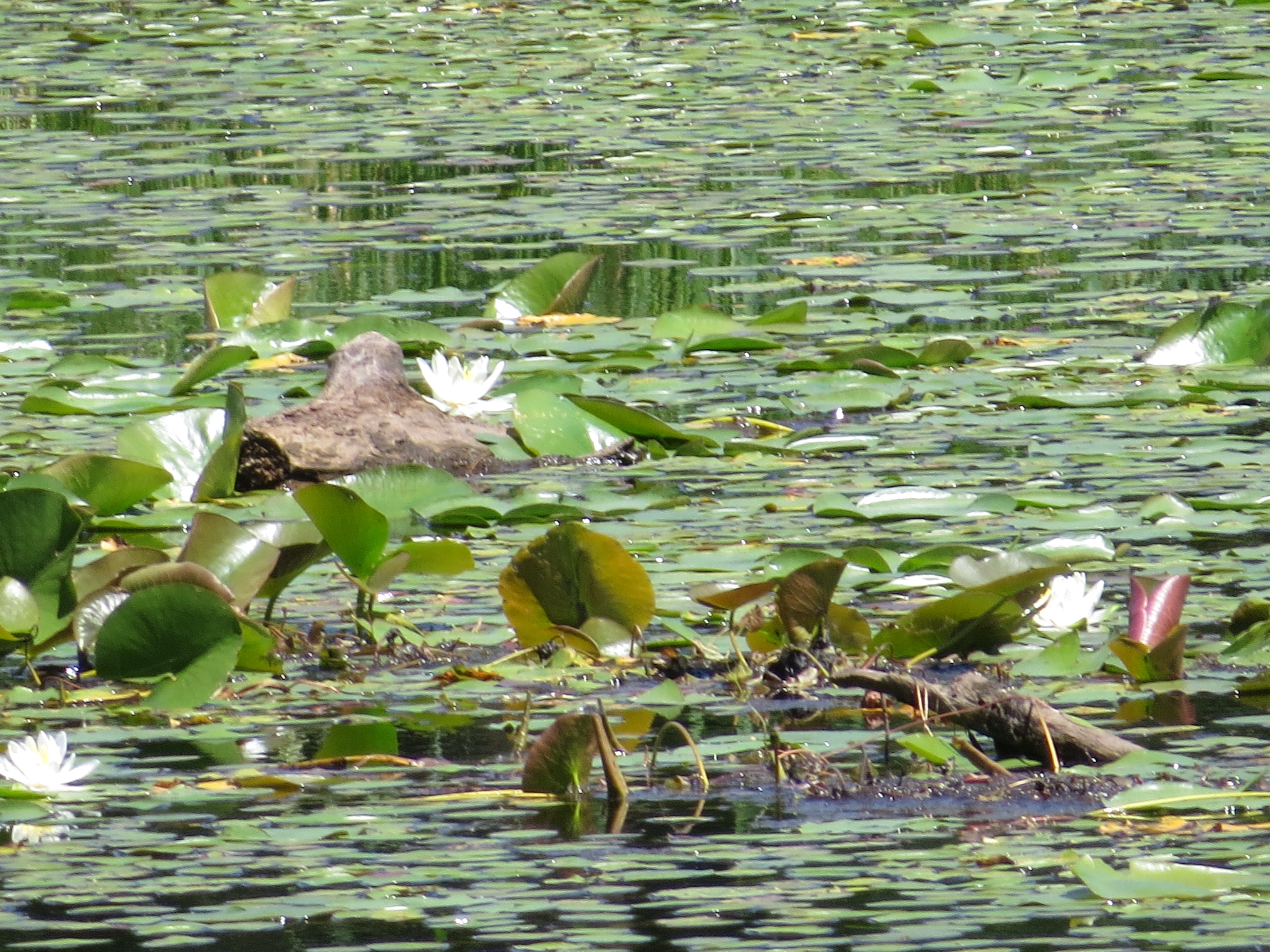
Back on the trail, we walked through Oak, Maple, and Birch trees until we came to a Tamarack bog. The wispy soft needles and craggy branches create an other-worldly effect in the bumpy bog, along with the bunches of four-foot-high ferns.

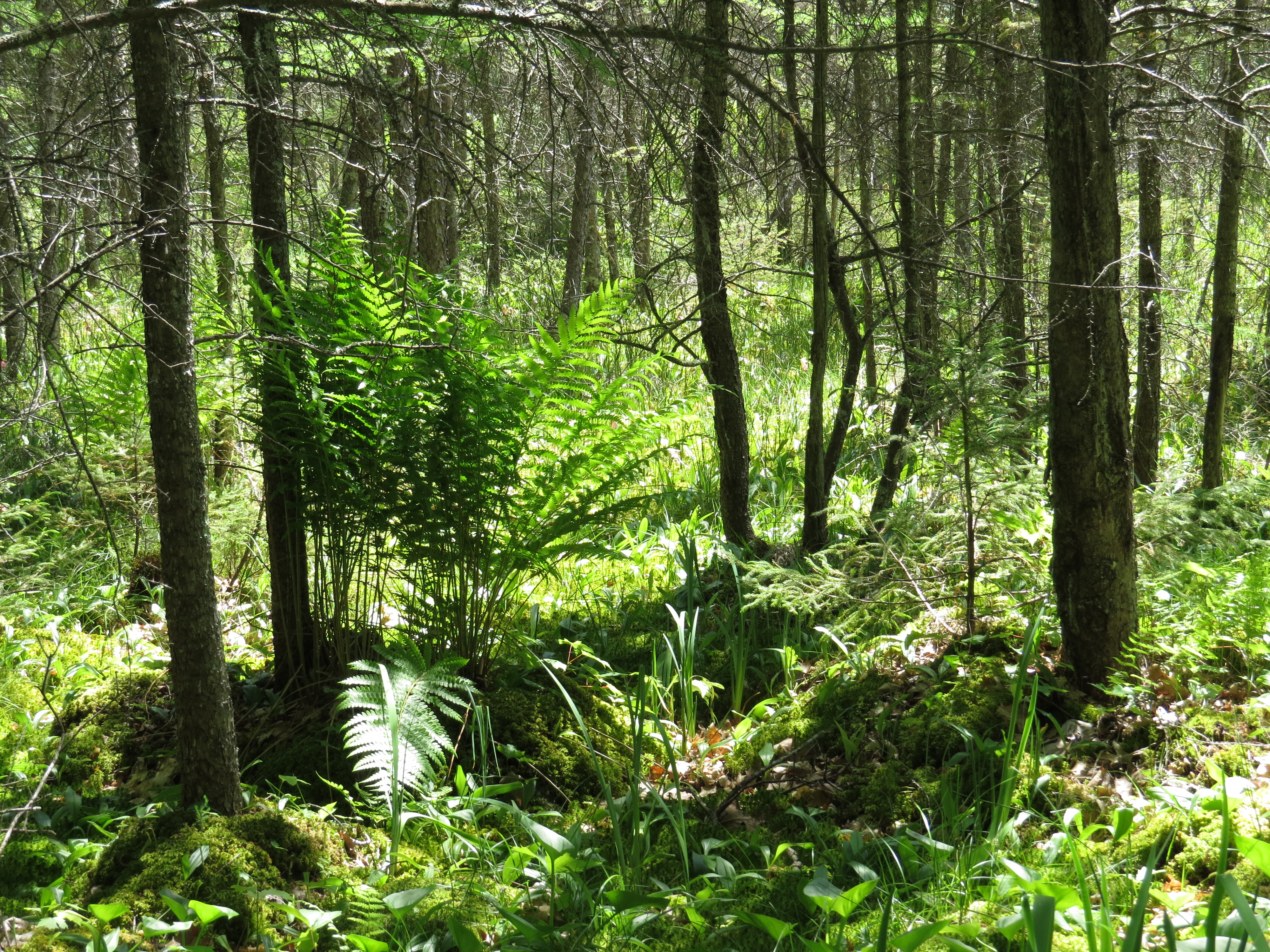
Deep in the bog, I caught sight of something red-colored. I left the trail and walked closer to get a better look. At one point I stepped from the firm forest floor into the squishy bog. I pulled my foot back from the wetness. The bog maintains its boundaries to protect the highly specialized plants and delicate ecosystem of sphagnum peat moss. From my dry footing, I zoomed in to see dark reddish-purple flowers with long stems and nodding heads. They were all pointed away from me, though I was able to get a slight sideways shot of one that showed a bright yellow center. What were these amazing flowers?! I had never seen anything like them before! I circled around the bog, hoping to see ‘the other side’ of the flower…but I never could. They were so deep into the center of the bog that I could not see more than their dark red backs.
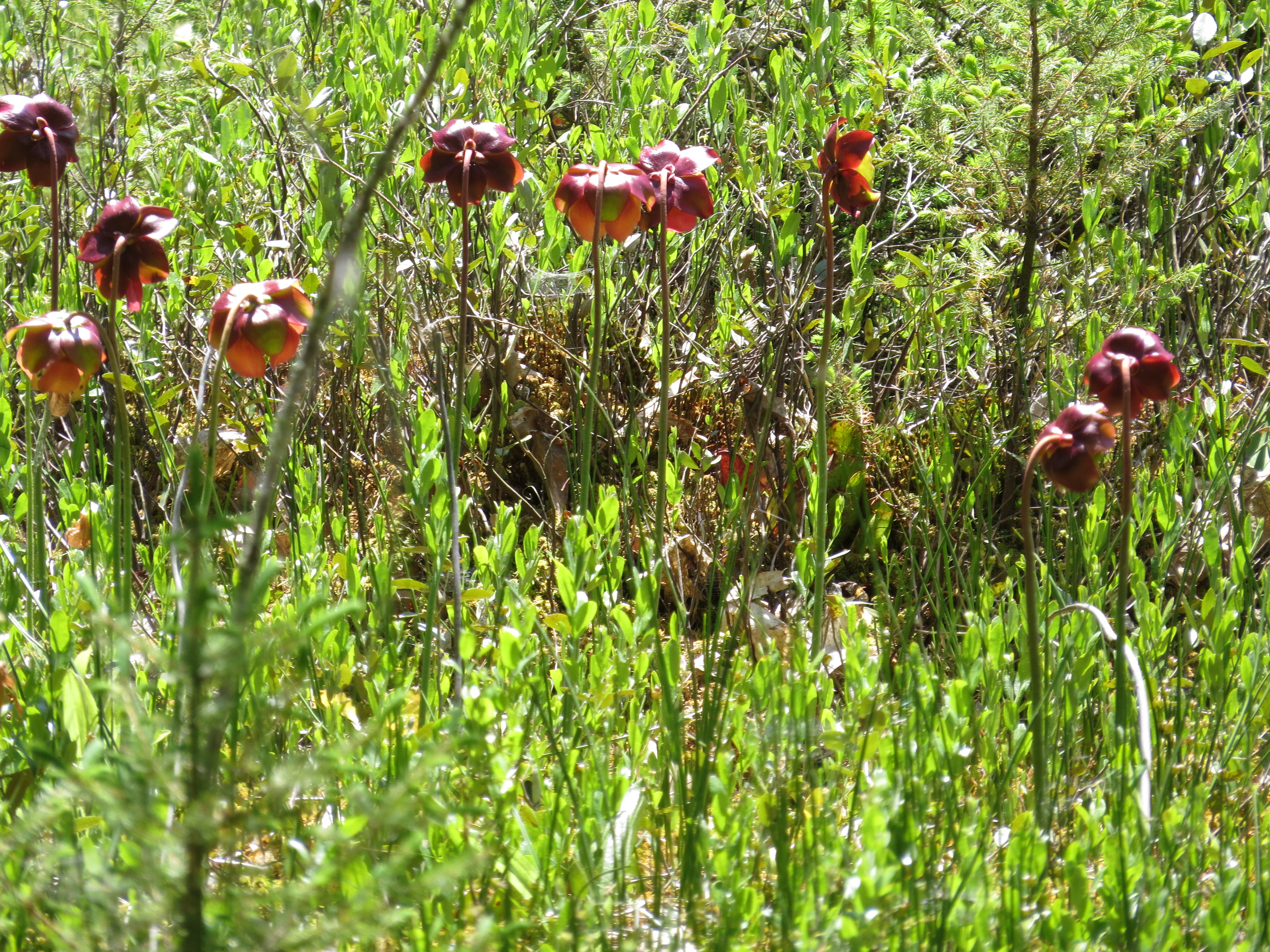
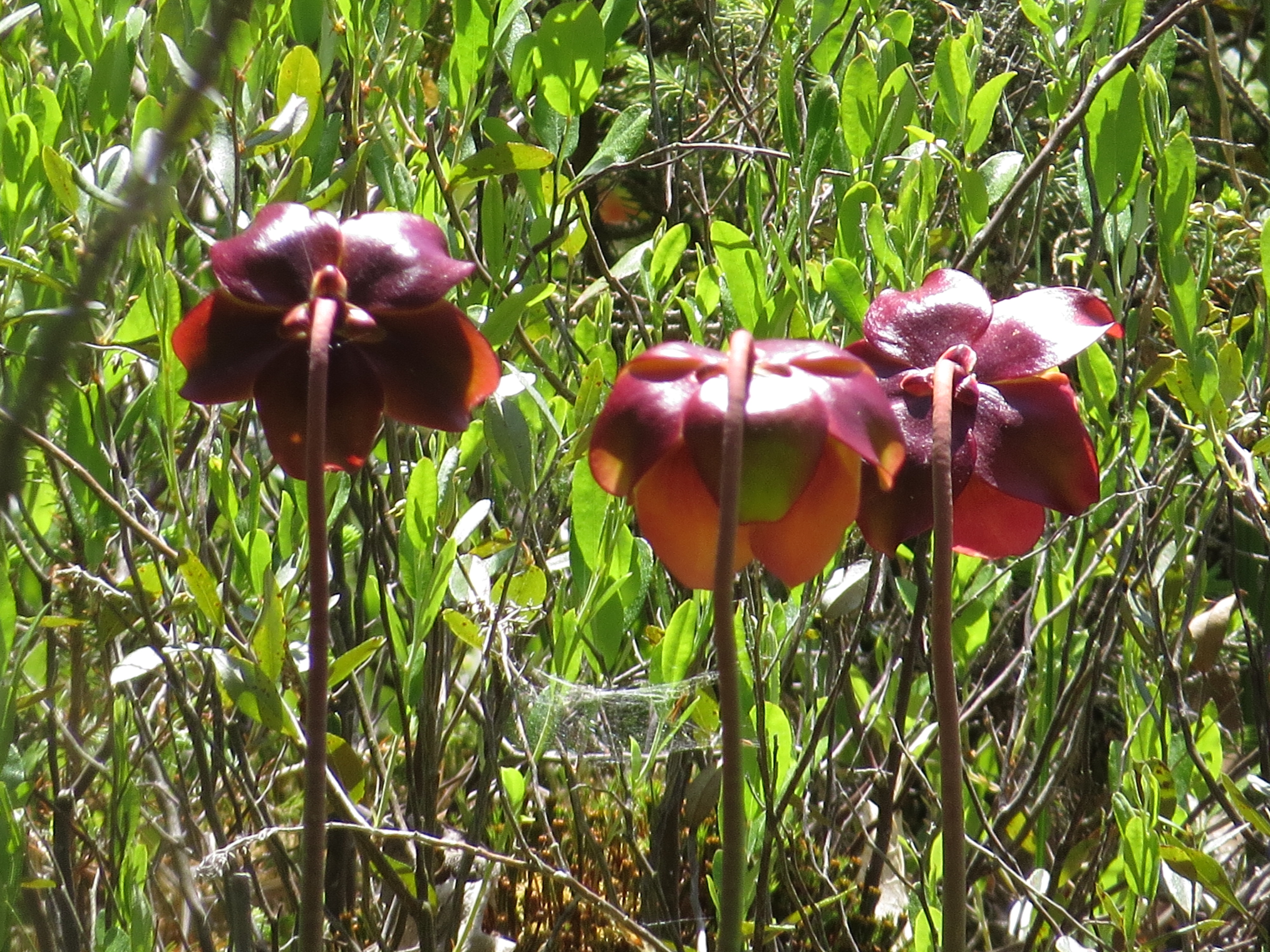
It wasn’t until I was home with access to the computer that I discovered the amazing flower was that of a Purple Pitcher Plant, a carnivorous plant that grows in the acidic bog. The rain-catching ‘pitcher’ of the plant attracts flies, ants, spiders, and moths that drown in the water and are ‘digested’ by a certain species of mosquito and midge along with bacteria. The plant is able to use the digested nutrients to grow.

The edge of the bog was scattered with ferns, club mosses, and an occasional Pink Lady’s Slipper, a hardy orchid pollinated by bumblebees.

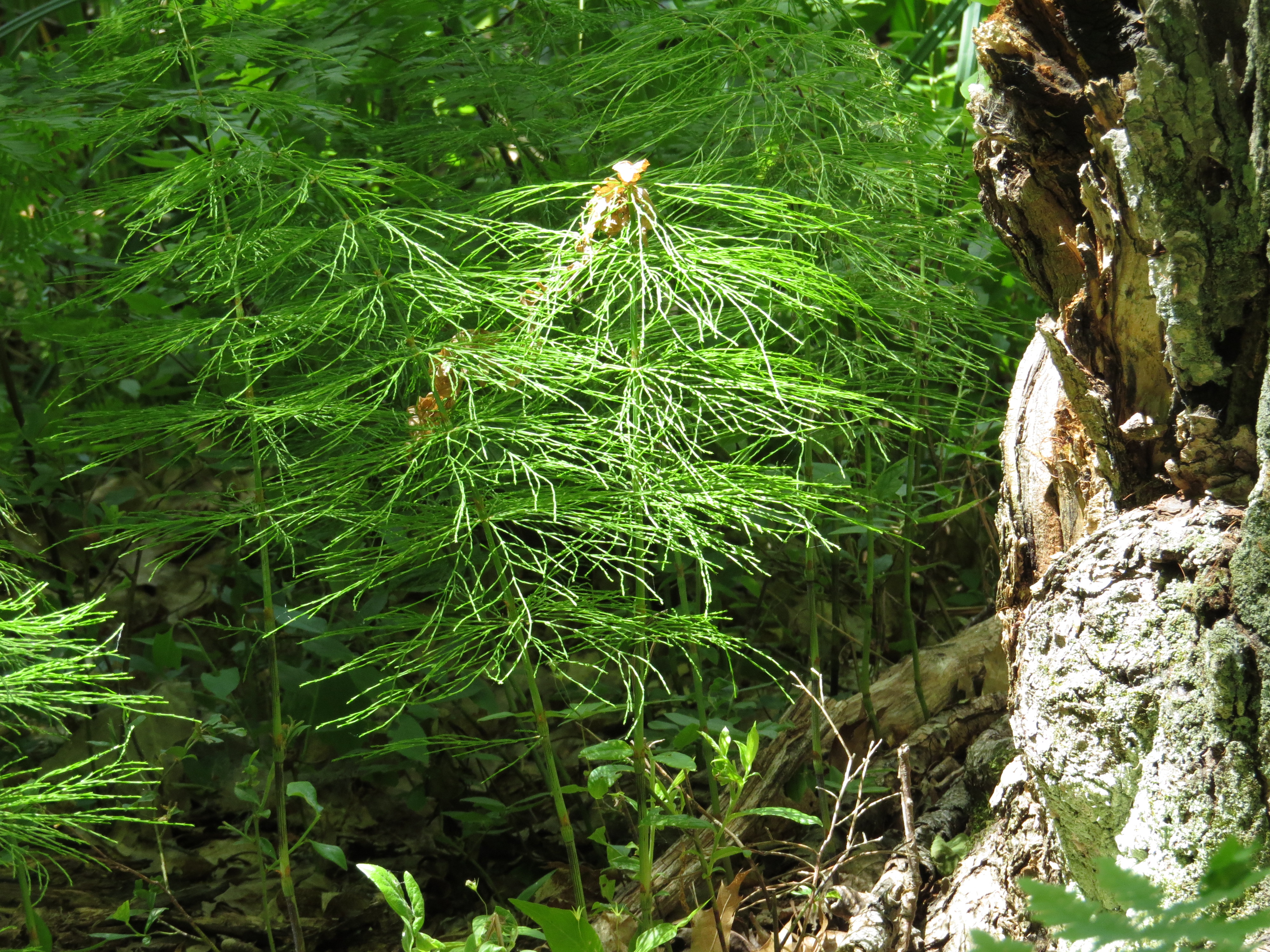
Another wetland flower that graced the early June trails was the Northern Blueflag Iris with their long, spear-like leaves and paper-thin lavender flower petals. They begin as dark purple conical buds, open to exquisite light-purple variegated blossoms, then curl and wither in the progression of age—the lifeline of us and all of Nature.
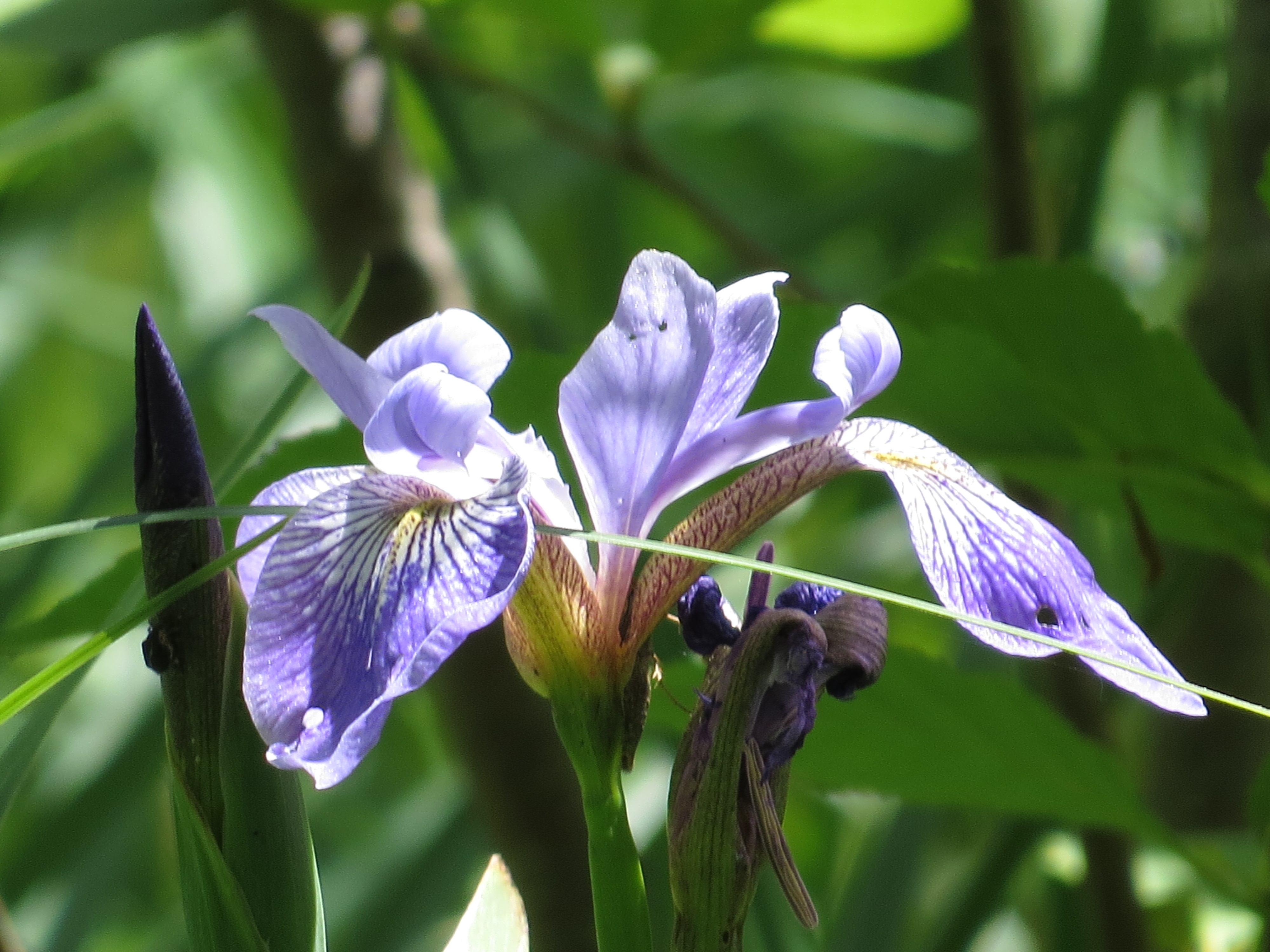
It was a happy birthday for me—I had discovered a ‘new’ flower and an amazing bog. I watched an elegant pair of swans and exchanged curious glances with a deer. I saw a black swamp and pristine white water lilies. I witnessed the progression and mystery of life and admired Nature’s art museum. My June birth flower is the Rose, and I appreciate and embrace the wild version for my flower. After our hike, we had a picnic by the roses alongside the Rum River. And even though I removed dozens of crawling ticks while we sat there, another mystical, magical dragonfly lighted on a stick nearby.
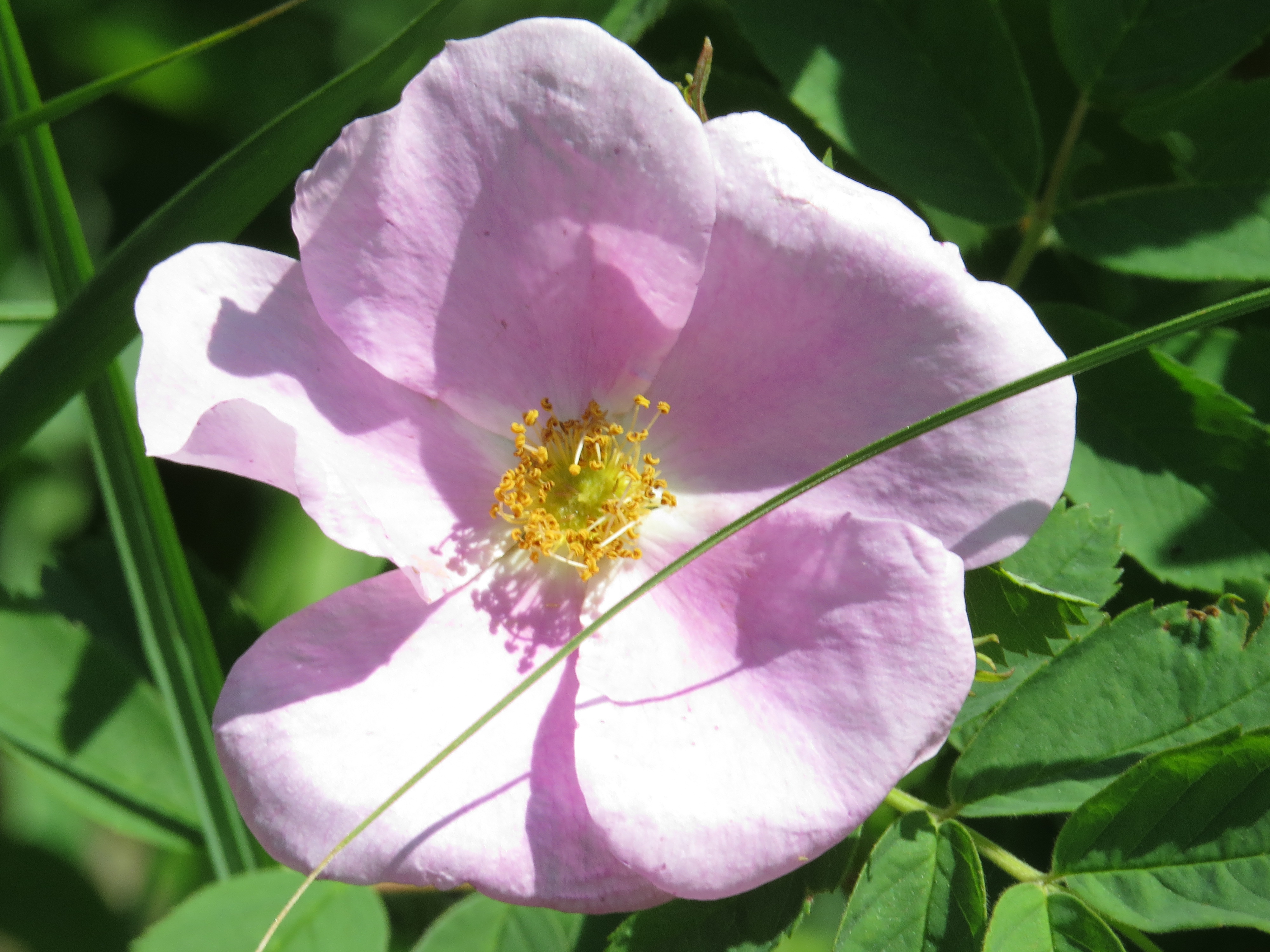
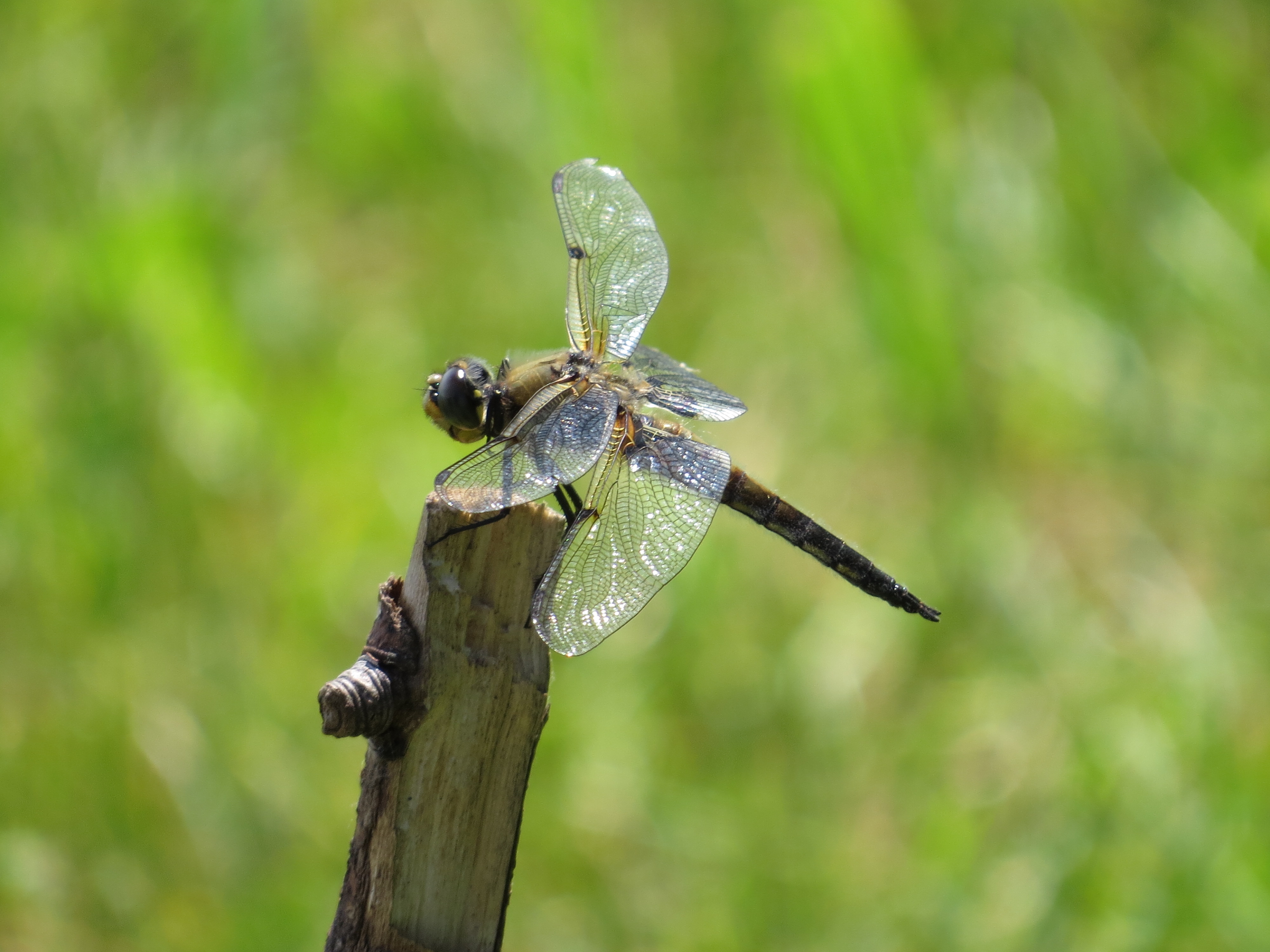
The mystery of aging—how we feel on the inside, how we look on the outside—spares no one lucky enough to struggle with their young-old identity. We grow with expectations—sky-high dreams and naïve aspirations. We are fresh, innocent, deep-colored buds of humans. We open to reality—our whole-hearted beautiful selves, shiny objects that can destroy, wounds that heal with amber tears forever embedded in our hearts, discoveries of muck and beauty. And then we fade, we wrinkle, and we attain a level of understanding that is only possible after staring into the wild eyes of Life. And through it all, we are the curators of Nature’s art museum. We choose how to look at, how to ‘see’ the world around us. If we’re lucky, we discover new things, we respect portraits of pain, we appreciate images of awesome beauty, and we imitate the mystery and magic of dragonflies.